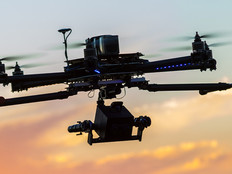How Is VR Training Being Used by Law Enforcement?
There are a variety of technology vendors and platforms being used to virtually train officers. Each has its own merits and technological requirements. Law enforcement agencies should evaluate each based on their needs and budgets.
One of the leading platforms is from NSENA, which, as the company’s website notes, “brings real world situations into the virtual space. A trainee can be transported to a back alley, a living room or a car stop. The impact of 360-degree immersion is powerful in a way that other simulation systems lack. The ultimate goal is to help every police officer better protect the community and come home safe.”
NSENA’s platform uses the HTC Vive VR platform as well as proprietary hardware and content. The company says its platform “works with every department to ensure they are familiar and comfortable with the easy-to-use hardware and software.”
Another company in this space is VirTra, which provides technical training for law enforcement and is being used by the Murfreesboro Police Department in Tennessee. As local TV station WKRN reports, the nearly 300-degree wraparound system is made of five large projectors that depict scenarios like mass shootings and DUI stops. Officers use nonlethal weapons and act out their responses to the virtual scenarios in real time.
“So, if … a door opens behind them to their left, then they would hear it behind them to their left,” the department’s Capt. Don Fanning tells WKRN. “There is directional sound. So, it really creates as much of a life-like scenario as you can humanly imagine.”
VirTra’s platform offers about 250 scenarios, with different outcomes for each. “You have to understand, officers are not perfect,” says Fanning. “We’re people. And, so, what we try to do is practice here. If I make a mistake here in this simulator, we can talk about it and we can go through it.”
Axon has been offering VR software that helps officers with empathy training for a variety of scenarios, including one focused on dealing with people who have schizophrenia, one on people with autism and one on suicidal subjects, Government Technology reports. Axon CEO Rick Smith tells Government Technology that the company plans to release “designated, more full-featured and broader product offerings.”
In August, Axon said in a press release that by the end of the year it will launch a training scenario on peer intervention, or “how an officer can best determine when to step in if he or she sees a colleague acting inappropriately.”
Axon said that the trainee “is able to see the scene unfolding from both the point-of-view of the subject as well as the point-of-view of the officer responding to the scene.”
One scenario will feature “a noise complaint call involving a resident who has had previous run-ins with the police,” while another will feature a “homeless man who is panhandling on business property.” In both scenarios, the trainee must figure out which decisions to make “while working with a fellow officer who demonstrates an obvious bias towards the subjects.”














